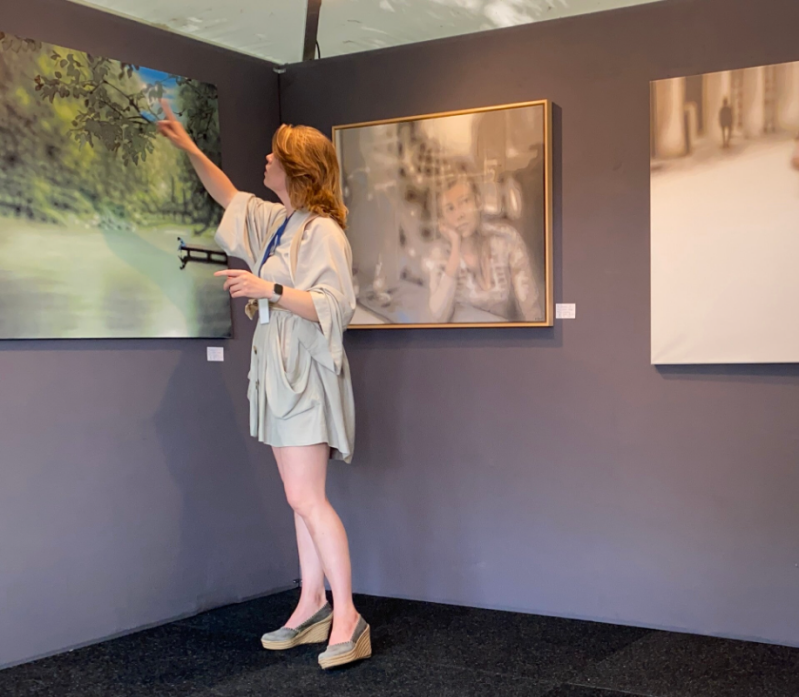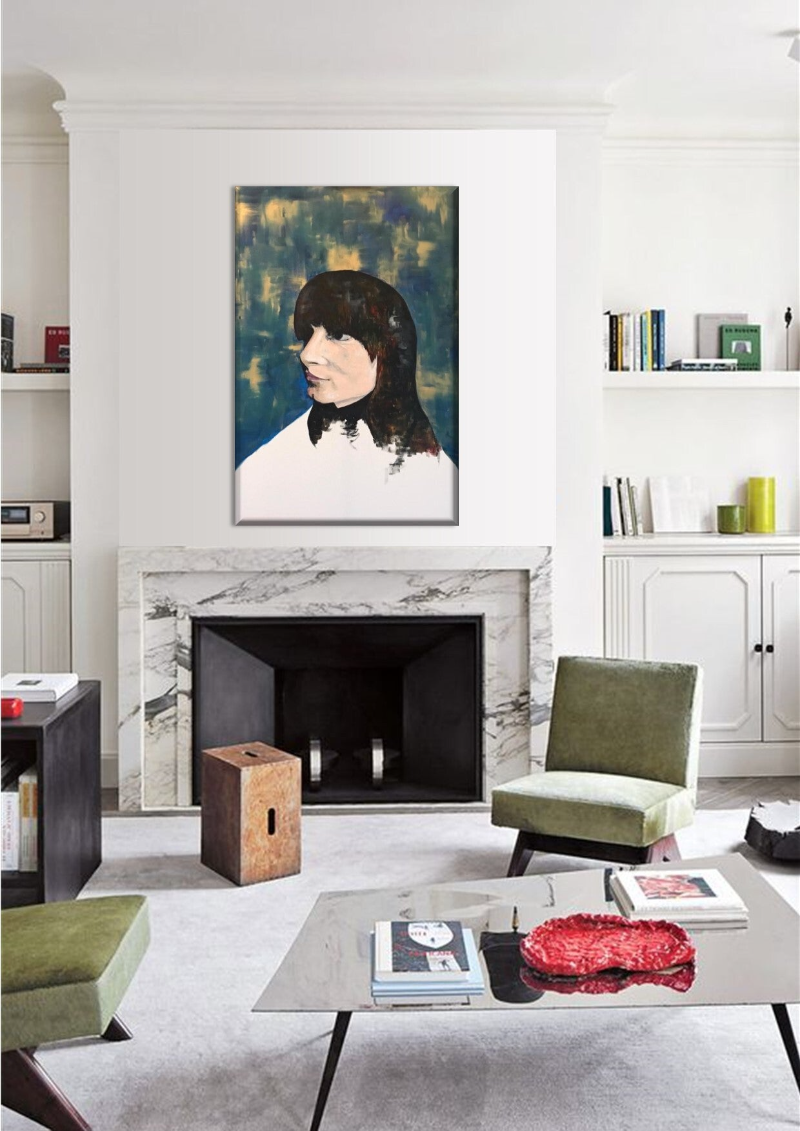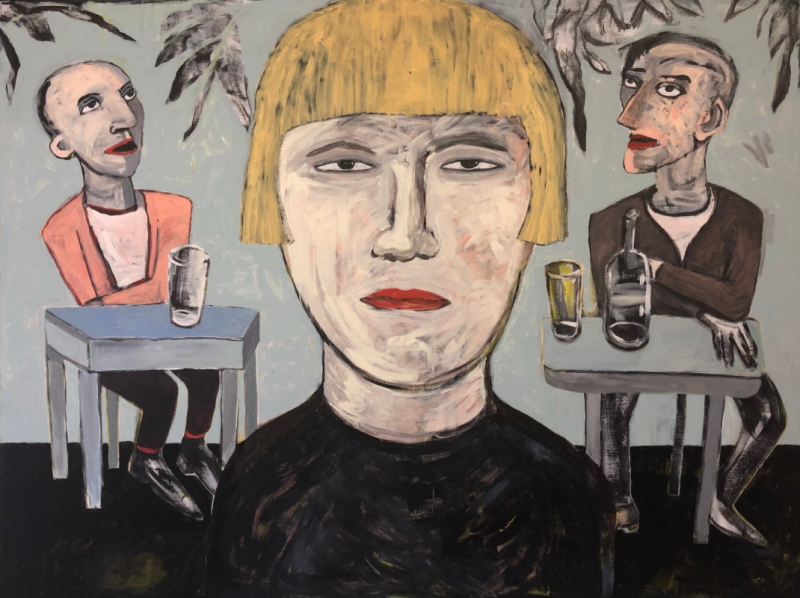People that buy art, are often people who come from families and spaces that buy art, whether they are wealthy collectors or artists buying peers artwork. The people who wonder who buys art, are either artists thinking about who will buy their art, or people who are unsure if they are allowed to buy art. If you googled this, chances are you are someone who would like to know if they are allowed to buy art. Historically there has been a class divide who can afford art or understand to buy the "right" type of art. To an extent this gatekeeping is still in swing as a marketing tactic to appeal to wealthier patrons that are motivated by exclusivity. We like to talk open about art and accessibility. Whether you buy from us or are hoping to understanding this art world with its own language and intrigue. So if you have ever been intimidated or exasperated by the weird art news of pieces selling in the billions and why that world gives a skew view of appreciating and buying art, this is for you.

Art Historian Tascha Sciarone at Art Laren 2022 showing oil painting by contemporary artist Marko Klomp.
Everyone is allowed to buy art - for better or for worst
Art is bought and collected by a wide range of people, from individuals to institutions. Which is a very straightforward answer that might leave you unsatisfied. But there are so many types of art pieces, artists and intentions behind art pieces, that honestly there is no one type of person who buys art. You buy art because it aligns with your joy, values, expectations and motives. Here are five common groups of people who buy art.

Visitors to the Discovery Art Fair in Frankfurt talking with Artist Nicole Sciarone. Children visit with their parents. Connoisseurs look to expand their collections. Artists come for inspiration. Regular people coming to have a day outing, maybe falling in love with an artwork.
1. Private collectors buy art
Private collectors: Private collectors are individuals who buy art for their own personal enjoyment, often with the intention of building a collection over time. Collectors may be motivated by a love of art, a desire for investment, or a combination of both. In other words, people buying art to decorate their houses or offices or even compliment the collection they already own. The budget for a collection can range and varies depending on your own budget. Some people admit with shame they only have a modest budget of €300,000.00 to spend on art a year and other people will invest in copies of their favourite artists work so they can change pieces depending on mood or season. Historically private collectors have been dentists, lawyers, socialites, industrialists and wealthy dynasties or monarchies. Some people will buy to impress or signify wealth and others will buy because they support their favourite local artists.
Here are some interesting articles that further explores private art buyers:
Why should I buy art? An article explaining the benefits of having art in your space.
Not allowed to BUY This article goes into who is/was allowed to buy art and the marketing behind it.
How to buy art as a beginner This article is for people who would like to understand how an art transaction happens.
Left Behind IX | Marko Klomp | Wildlife Painting
Left behind 9 (2020). Marko Klomp. Oil on Linen. 120 x 100cm.
2. Art Investors buy art
Sometimes private collectors and Art Investors overlap. Art investors: Art investors buy art with the primary goal of making a profit. They may purchase art as a long-term investment, with the hope that the value of the piece will increase over time. You can only do this if you have enough social and economic capital to invest in already well known artists from previous generations or if you are able to convince enough institutions and people of the rising worth. So it is a rigged system. The days of finding a painting in the attic , worth thousands if not millions, is still from a period where we worshipped singular artistic figures in the art canon and colonial looting was of priceless objects where common enough not to have any consequences. But if you can get enough of your friends to buy paintings and resell them through your hype, welcome to the basics of a Ponzi-scheme.
That is not to say art will not increase in value over time, with enough money that happens fast, but through love and devotion to an artist and their oeuvre over generations this happens organically. And sometimes you can sell pieces from your own collection privately or publicly for increased prices either because you have outgrown or wish to bequeath it to the public.
Gloei of Groei | Adéle du Plessis | Still-life Painting
Groei of Gloei (Glow in the Dark Paint), (2020) Adéle du Plessis. Acrylic on Canvas. 50cm x 40cm.
3. Museums and Galleries buy art
Museums and galleries: Museums and galleries buy art to add to their collections, with the goal of preserving and displaying important works of art for the public. Usually these paintings are either bought from the artist themselves or are bough from the secondary art market, like art auctions or private collectors. The secondary art market is the place where art with verified monetary and cultural value gets resold between individuals and/or institutions.
Some art museums are called galleries, that because a gallery room is actually an architectural term referring to the long open spaces, which is ideal to hang a lot of art pieces. In the years places where art is sold has gone from salons to being known by the public as art galleries. Public art galleries, are funded by wealthy collectors (or their foundations) or the state buys art to hang in their collection.
Primary market art galleries - a tangent regarding investors and art galleries
Art galleries like ours, are known as primary market art galleries. That means the art pieces is sold for the first time to a new client. We, and other primary art market galleries, usually work together with artist on consignment base. That means we sell the pieces for the artist, but we do not own the artwork. Early 2023 we had a lot of enquiries for pieces by Marko Klomp, we were offered a fraction of the price they were listed. After several of these inquiries, it became clear it was a group of art investors who had hoped to buy the pieces from the gallery, as they assumed the prices was a mark up from what we had outright bought for from him. That we are a secondary market art gallery. Except we work together symbiotically with Marko to sell his art pieces in the primary art market.
As it takes Marko give or take a month to complete a painting, the prices they were offering did in now way reflect an honest price for his labour. But they were hoping to sell his pieces for a markup and turn a fast profit, with no regards to him ever being fairly compensated for his art, his labour or what this means for his career going forward when this scheme of theirs ultimately collapses. Leaving the gallery and Marko to bear the brunt of social outlash of their get rich quick scheme. Being propositioned in the early part of the year in the heart of winter when there is usually very few if no sales for two to three months is also very telling in how they wish to exploit people. They had hoped I was desperate enough to sell to them for a very low price in order to generate some cashflow over the slow months.
Silke in the Morning (2021). Fiona J. Williams. Acrylic on Canvas. 91cm x 61cm.
4. Corporations and Businesses buy art
Corporations: Many corporations buy art to display in their offices and public spaces, often as part of an effort to enhance their image or create a more inviting and stimulating work environment. Art has shown to help with employee retention, stress management and positive social interactions between clients and colleagues alike. We go in depth into why it is beneficial for offices and even hospitals to have art in their buildings in this article. The Benefits of Art in the Workplace
5. Governments and public institutions buy art
Governments and public institutions: Governments and public institutions may purchase art for display in public spaces, such as parks, libraries, and government buildings, as a way to promote culture and enrich public life. So we are not counting museums and galleries as public institutions, as they were already mentioned in a separate heading. Some museum collections are also privately held, even though the most noteworthy and accessible is government funded, but also maintains some autonomy outside of political influence. Having art in public spaces or buildings promotes similar wellbeing as art in office spaces.
Even though I write this as an Art Historian, having enough green spaces, has more added benefit than art can ever have. However, art in these spaces can facilitate dialogue, promote values and add to the appeal of public spaces. I also think there used to be a rule that all new government built spaces had to at least allocate 10% of the building budget to its public appeal and art in previous decades. But in the ensuing years, different municipalities have been let to set their own budgets regarding mandatory art budget for government buildings. Here is the download of the PDF from the Dutch Government from 2004.
Zonder Titel | Thea van Doorn | Figuratieve Schilderij
Untitled, (2010). Thea van Doorn. Acrylic on Linen. 150cm x 200cm.
6. Interior Designers buy art for their clients
Interior designers may buy art on behalf of their clients to help create a specific look or feel in a space. Often though interior designers will ask artists work they think will fit with their clients need to create custom pieces. And I also want to add that in some case interior designers and private art advisors have overlapping roles.
Interior designers play a pivotal role in creating aesthetically pleasing and functional spaces for their clients. When it comes to acquiring art for these spaces, they can act as intermediaries between artists and their clients, facilitating the selection and purchase of artworks that align with the design vision.
Interior designers and art advisors (sometimes Art Historians) will help private homeowners, businesses, real estate developers, public institutions, non-profits and hospitals buy art to match the values and eathetics these people and places wish to embody. In this way bigger spaces not geared to an art collection like museums can create cohesive collection.
In all these scenarios, interior designers act as curators and liaisons between the artistic world and their clients' needs. They consider the client's preferences, the intended atmosphere of the space, the budget constraints, and the artistic vision to select or commission art pieces that harmonize with the overall interior design concept. Their goal is to create spaces that are not only visually appealing but also functionally suitable for the intended purpose.

Black and Bold | Negar Rashidi | Mixed Media
Black and Bold (2023). Negar Rashidi. Mixed Media. 45cm x 50cm (framed)
So who buys art? Everyone who wants to
Overall, there is a diverse range of people and institutions that buy art, with different motivations and goals for their purchases. Whether for personal enjoyment, investment potential, or cultural preservation, art continues to holds a significant place in the hearts and minds of many. And I also hope you learned that those who buy art have very different motives for buying it. So I hope that sets you at ease, there is no right or wrong reason to buy art. Even the example we gave about Marko's work and art investors, this happens so often, that I thought to add an example of a very different motivation some people have in buying art. I hope this article gave you more insight to who, how and why people are motivated to buy art. Hopefully this helps you better adjust your budget and expectations according to your long term goals when buying art.
Love,
Tascha Sciarone
Art Historian
Gallery Manager






Add comment
Comments
Achaa hai , me bhi apna paintings ko aapki gallery me exhibition karana chahti hu or ye bikri ho ache dhanrashi me ese ummid karti hu dhanywaad kalakar suman joshi